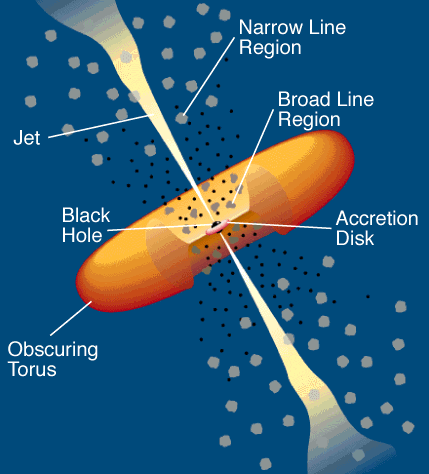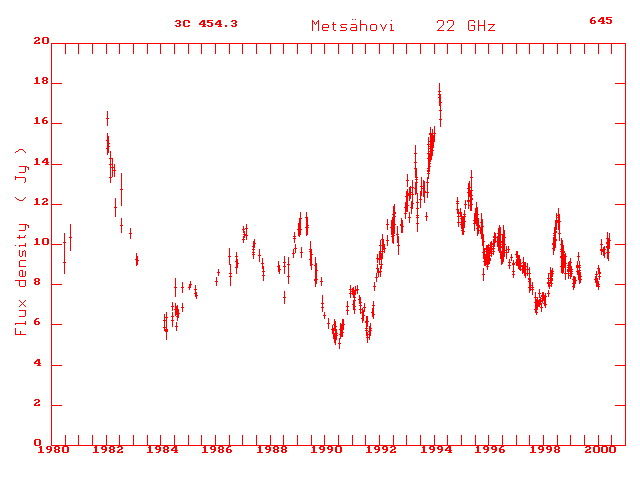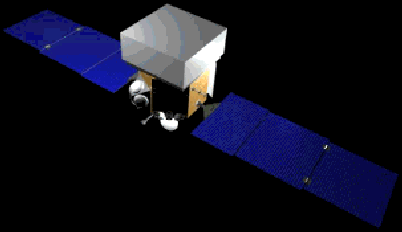Our research team is responsible for the preliminary work before
launch and for the exploitation of the satellite data.
Planck satellite will scan the whole sky twice at high radio
frequencies. Several types of active galaxies
will be found in these maps, giving us lots of new information at
many new radio frequencies. It is possible that we will find new
types of active galaxies, too!
Planck will help us study, among others, the following topics:
Physical models of active galactic nuclei
Planck data will help studying which models best
describe active galactic nuclei (AGNs). For example, the
appearance of an AGN depends on the angle that we look at
it. Are we looking along its powerful radio jet, or towards
the centre of the galaxy? Sometimes there is a dusty torus
between us and the centre so we can't see it. All this is
why, when we are looking at an active galaxy from different
angles, we see a variety of properties and events which
lead to the division of active galaxies into several
classes. There may be a way of unifying all the different
classes of AGNs -by studying their viewing angles,
brightness, structure, and spectra. We can also use the
information we get of the bright knots -or shocks- moving
along the powerful radio jets for developing and testing
shock models.
Figure: C.M. Urry & P. Padovani |
 |
BL Lac objects
BL Lac objects (BLOs) are active galaxies with no emission lines in
their spectra (or the lines are very weak). There are different
types of BLOs, depending on the frequency they are brightest at
(radio or X-ray domain). Currently we are not sure whether this is
due to different viewing angles or if the sources are intrinsically
different. A class of BLOs intermediate to the two main classes has
been recently discovered. With the extensive data from the Planck
satellite we can study all these classes of BL Lac objects, and try
to find out how and why they are different.
Fainter flat-spectrum AGNs
So far all full-sky surveys have been performed at low frequencies
-at 8.4 GHz or lower. This is because it is usually presumed, by
looking at their spectra which are flat at lower frequencies but
get much steeper at higher frequencies, that quasars are very faint
at higher frequencies. Our group has recently discovered that some
sources are unexpectedly bright at high radio frequencies. This is
possibly due to a different (flatter) shape of their spectra or to
the variability of their brightness over time. The Planck satellite
survey will provide us with a catalog of fainter sources like this,
and we can study their spectra, as well as the potential
differences between the bright and the faint flat-spectrum radio
sources.
Variability
|
 |
Planck will produce observations at a variety of timescales,
from a few hours (position of the receiver horns, changes in the
satellite's orbit) to six months (whole sky scanned twice in one
year). These variability data can be used in several ways. With the
longer timescale data we can study the structure of the radio jets
of quasars, the variability of individual shocks in the jets, and
possibly the variability of the core.
Click figure to see a larger version |



